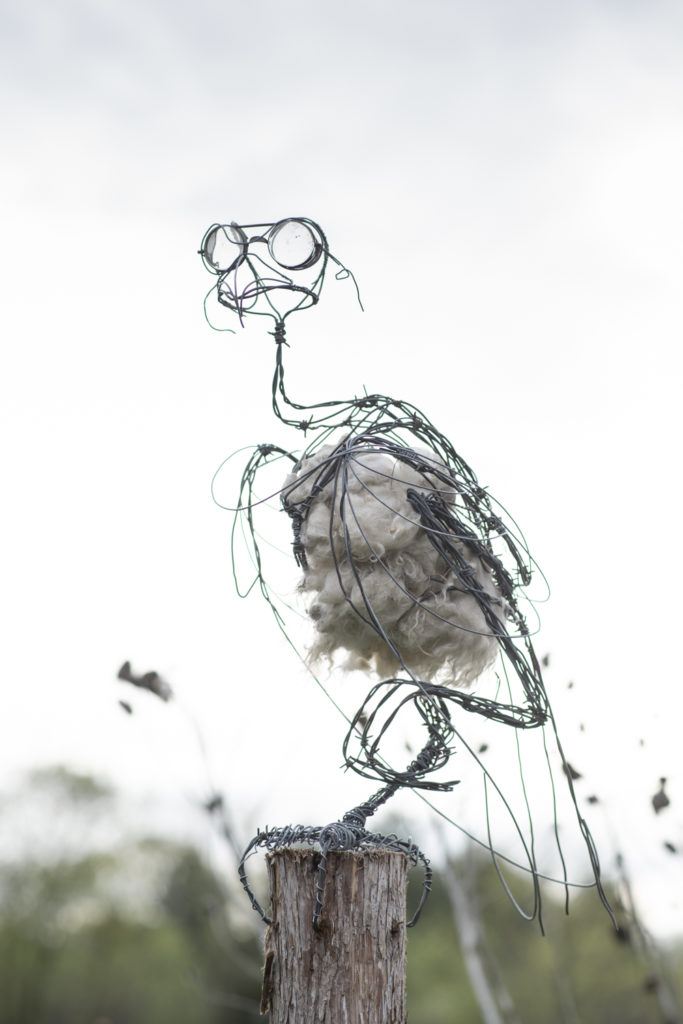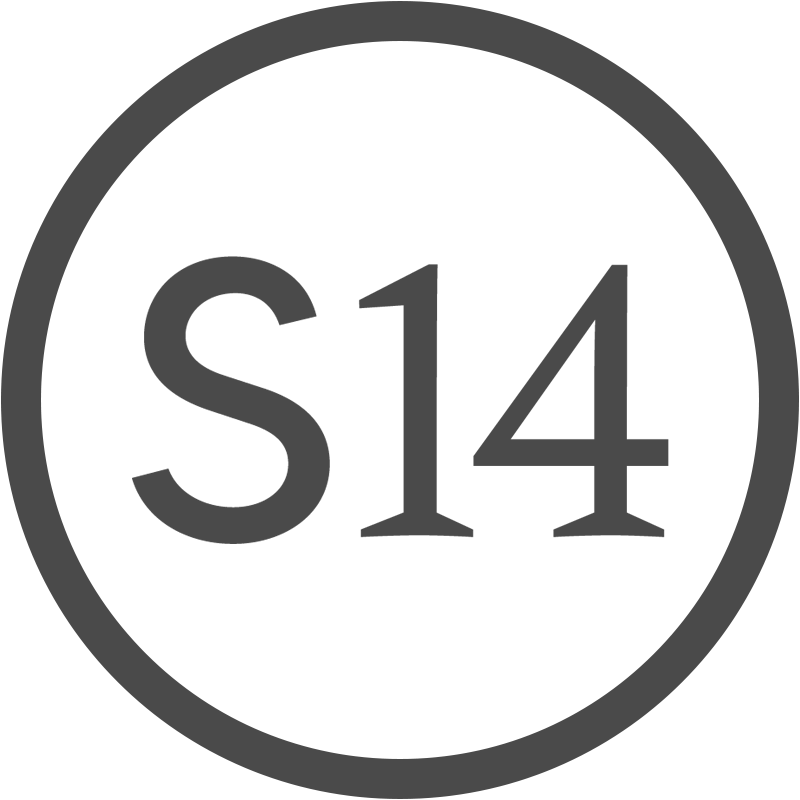HVT X S14 Stories
—October 4, 2018
For Creatures Big & Small
“The sophisticated evolution that makes a bird a bird—the hollow bones, the geometry—they are absolutely incredible.”
Sculptor Eben Markowski sits bright-eyed and straight-backed on a stool in front of me. He’s wearing a crisp blue T-shirt that defies both the grayness of the day and the tarnished hue to the palms of his hands, which I catch glimpses of as he speaks. Eben’s surrounded by the materials of his labor—heavy machinery, scraps of metal, wire and the artworks-in-progress perched in a circumference around the studio. The birds, while inanimate, strike me as the stoic protectors of the artist whose hands have made them. Eben, however, I would describe as vivid and affable … an advocate for “creatures great and small,” to quote James Herriot.
The rain outside thrums against the metal roof of the studio. I’ve come to Eben’s homestead on this flat and fertile terrain between Lake Champlain and the Otter Creek, to learn more about the artist’s process and specifically, his exhibit Dear Wild Ones, at Northern Daughters, a fine art gallery in Vergennes.

There is one word that keeps coming up throughout our conversation: practical. Eben is quick to define himself as a practical artist, “almost to a fault,” he adds. Materially speaking, he combines the use of off-the-shelf hardware and salvaged parts with the more time-consuming costly work of sculpting metal into the complex shapes of owl heads, beaks, talons, and the like. However, the longer I sit with Eben, the more I come to realize that the way he works—his approach to art and life—reflects his understanding about the natural world. “I refer to everything right now as ecology because everything is so interconnected—microbial life in soil is incorporated into what I think of as wildlife.”
While Eben considers even the most miniscule biology, he’s taken on sculpting the largest of mammals with his piece, Gravity, a life-sized elephant now on display at the Burlington International Airport. The chains that drape on and around the body of Gravity serve as a metaphor for both the bondage humans have placed upon this
vulnerable species and the links connecting all life together. Visually speaking, the chains give Gravity the quality of loose, hanging skin. It’s a graceful, abstract touch to a dramatic piece.
Eben’s philosophy goes a step farther than a sweeping reverence for the web of natural systems. As he puts it, “I see the world through the goggles of climate change and the anthropomorphic pressures that we put onto everything. … If there’s a message to my work, it is trying to instill an appreciation of ecology and whenever possible, having an informed discussion on the importance of it—how much we trivialize it and how arrogant we are to think we can do better and we don’t. We have a historical precedence of never doing better than ecology does.
(It) is the most cost-effective means of perpetuating our survival.”
This would explain a lot about the way he’s chosen to live, why he and his partner Heidi Mahoney designed and built a solarium for an art studio so that no artificial heat or light would be needed. It would explain the couple’s decision ten years ago to stop eating animal products, and the congregation of rescued goats, cows, chickens, and sheep that range freely in and out of their barn. It would explain the
hand scythes Eben’s made to manually cut his acres of grass—think van Gogh’s Reaper with a Sickle—along with his invention named Mary Ann, a mechanized human-powered shovel designed as an alternative to tractors. While convention might have one thinking, “How exactly are these decisions practical?” Eben would point out that the scythe, Mary Ann, veganism … these technologies and choices tread lightly on ecology, while promoting physical, mental, and cardiovascular health benefits (no need to drive to the gym!).
“If there’s a message to my work, it is trying to instill an appreciation of ecology and whenever possible, having an informed discussion on the importance of it…”
But he’s honest about the struggles, too, questioning openly the hard work—why he’s chosen the costly and labor-intensive artistic medium of metal, why he endures the frigid gray winter days in his studio, or why they’ve taken on the responsibility of so many farm animals. “But then,” he says, “Heidi’s quick to remind me, it’s been an enormous education.”
I’d consider the mere two hours I’ve spent with Eben to be an education. Appropriately mirroring the inter-web of ecology, our conversation, which began about art, has taken so many illuminating turns and meanderings the Otter Creek would be envious. Though my questions for Eben have been answered, I have new ones lingering for myself, both practical and philosophical, that I might be grappling with for some time.


